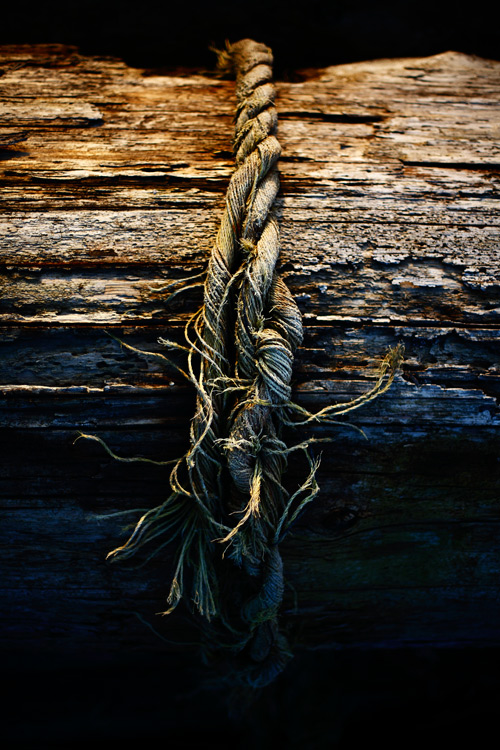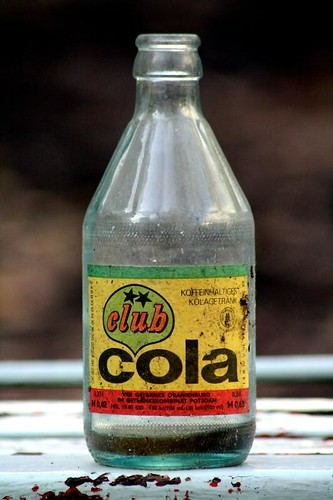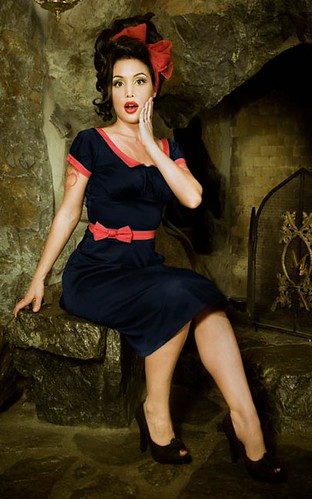NEW / USED --->History of Material Culture
 Uploaded with ImageShack.us
Uploaded with ImageShack.us
mercoledì 17 novembre 2010
The conceptual map explains the relation between new and used, as transformation of an object in its life-cycle, characterized by some specific actions: to innovate, to inugurate, to use, to last, to get old and to reuse.
lunedì 15 novembre 2010
Wu jin qi yong (Waste Not) is the name of a new Art installation at the Vancouver Art Gallery. This piece is made of an approximate 10,000 household items collected by Zhao Xiangyan who believe that anything should be used as much as possible.
The value of a used stamp is higher than a new one. The used stamp, to get more value, has to have the post mark readable and it doesn't have to ruin the image. The value is given also by the intact identation and the bright colour: maybe these two features can be damaged by the passing time.
Etichette:
Things
domenica 7 novembre 2010
"Nothing is ever reborn, but it never completely disappears either, everything that has ever been emerges in a new form."
"Nulla di Vecchio è mai rinato, ma neppure scompare mai completamente. E tutto ciò che è sempre stato emerge in una forma nuova!"
-Alvar Aalto-
Etichette:
Architecture,
People,
Proverbs and citations
giovedì 4 novembre 2010
Cinderella is a traditional tale which inspired cartoons, films, ballets and musicals. She only wears rags and old dress and she can't buy a new one. But one night something amazing happened: a fairy appeard and with a flick of her magic wand, Cinderella found herself wearing the most beautiful dress she had ever seen.
Etichette:
Tales
martedì 2 novembre 2010
New and used could be:
A as ashtray
B as book
C as car
D as disposable dish
E as engine
F as filter
G as gum
H as handkerchief
I as icona
J as jeans
K as knife
L as lipstick
M as mop
N as newspaper
O as oxygen
P as pencil
Q as q-tips
R as raquet
S as syringe
T as ticket
U as underwear
V as vinyl
W as waste
X as new X-men, a super hero comic book series
Y as year
Z as zip
Etichette:
Alphabet
We can say an object is new or used according to this different phenomena:
Etichette:
Phenomena
Time: is a one-dimensional quantity used to sequence events, to quantify the durations of events and the intervals between them, the ageing, and (used together with space) to quantify and measure the motions of objects.
Etichette:
Phenomena
Ageing: is the accumulation of changes in an organism or object over time.
Etichette:
Phenomena
TBO, time between overhaul: is a time 'recommended' by the manufacturer and depending upon how, for example, an aircraft is being operated. For aircraft used for non-commercial purposes overhauls are not mandatory, but highly recommended. Likewise, the TBO time recommended doesn't guarantee that the engine will last that long.
Etichette:
Phenomena
Operation time: The time interval between the instant of the occurrence of a specified input condition to a system and the instant of completion of a specified operation.
Etichette:
Phenomena
Life Cycle: is the time between an object's creation (also known as instantiation or construction) till the object is no longer used, and is destructed or freed
Etichette:
Phenomena
In continuum mechanics, stress is a measure of the internal forces acting within a deformable body. Quantitatively, it is a measure of the average force per unit area of a surface within the body on which internal forces act. These internal forces are produced between the particles in the body as a reaction to external forces applied on the body. Because the loaded deformable body is assumed to behave as a continuum, these internal forces are distributed continuously within the volume of the material body, and result in deformation of the body's shape. Beyond certain limits of material strength, this can lead to a permanent change of shape or physical failure. The dimension of stress is that of pressure, and therefore the SI unit for stress is the pascal (symbol Pa), which is equivalent to one newton (force) per square meter (unit area). In Imperial units, stress is measured in pound-force per square inch, which is abbreviated as psi.
Etichette:
Phenomena
Fatigue: in materials science, fatigue is the progressive and localized structural damage that occurs when a material is subjected to cyclic loading. The nominal maximum stress values are less than the ultimate tensile stress limit, and may be below the yield stress limit of the material.
Fatigue occurs when a material is subjected to repeated loading and unloading. If the loads are above a certain threshold, microscopic cracks will begin to form at the surface. Eventually a crack will reach a critical size, and the structure will suddenly fracture. The shape of the structure will significantly affect the fatigue life; square holes or sharp corners will lead to elevated local stresses where fatigue cracks can initiate. Round holes and smooth transitions or fillets are therefore important to increase the fatigue strength of the structure.
In high-cycle fatigue situations, materials performance is commonly characterised by Wöhler curve: a graph of the magnitude of a cyclic stress against the logarithmic scale of cycles to failure.
Etichette:
Phenomena
Wear: in materials science, wear is the erosion of material from a solid surface by the action of another surface. It is related to surface interactions and more specifically the removal of material from a surface as a result of mechanical action. The need for mechanical action, in the form of contact due to relative motion, is an important distinction between mechanical wear and other processes with similar outcomes. The definition of wear does not include loss of dimension from plastic deformation, although wear has occurred despite no material removal, because it may lack the action of another surface. This definition also fails to include impact wear, where there is no sliding motion, cavitation, where the counterbody is a fluid, and corrosion, where the damage is due to chemical rather than mechanical action.
Wear can also be defined as a process in which interaction of the surfaces or bounding faces of a solid with its working environment results in dimensional loss of the solid, with or without loss of material. Aspects of the working environment which affect wear include loads (such as unidirectional sliding, reciprocating, rolling, and impact loads), speed, temperature, type of counterbody (solid, liquid, or gas), and type of contact (single phase or multiphase, in which the phases involved can be liquid plus solid particles plus gas bubbles).
Etichette:
Phenomena
venerdì 29 ottobre 2010
It refers to the electronic sensor that is attached to the brake system of the automobile. The main function of a brake sensor is to detect the wear and tear of the brake pads.
The brake sensor indirectly prevents the extreme deterioration of the brake pads by sensing the temperature of the brake pads. If the temperature becomes too high, the brake sensor will send alert signal to the driver via the brake sensor pilot light found on the dashboard. This pilot light flashes when the temperature becomes too high to bear.
Etichette:
Measures
One of the greatest episodes in recent history where people had to deal with the concept of used and new is the period after the fall of the Berlin Wall where people, within a short space of time, took part to an important change not only historical but also in terms of material culture.
Etichette:
History
The comprehension of the adjectives new/used have a different meaning in the two eras: artisan and industrial. We can say that in the artisan era new things were realated to the functionality, it was something that has a new function what was considered new, instead in the industrial era something new is no longer associated to function but to fashion and esthetics. Also the duration of objects in artisan era was longer than in the industrial one, what means that the period of use of objects is shorter now than in artisan era.
giovedì 28 ottobre 2010
In the movie "Tinker Bell" we can see how abandoned objects are reused to create new useful object to resolve problems, through the peolpe's intelligence.
Etichette:
Movies
Isabelline, sometimes called Isabella, is a colour, variously described as pale grey-yellow, pale fawn, pale cream-brown or parchment. In horse colours, Isabelline or Isabella Palomino are terms applied to very pale palomino horses whose coat colour is cream, pale yellow or almost white.
According to popular legend, the name comes from Isabella, Archduchess of Austria (1566–1633), daughter of Philip II of Spain (1527–1598). Her husband laid siege to Ostend in July 1601 and Isabella, expecting a quick victory, vowed not to change her underwear until the city was taken. The siege lasted a little over three years (ending in September 1604) and her underwear understandably became discoloured in the interval.
A more plausible, though probably still false, version refers to the much earlier Isabella I of Castile, the Catholic (1451–1504) and the eight-month siege of Granada by Ferdinand II of Aragon (1452–1516). This siege ended in January 1492 and again resulted in overworn underwear belonging to Isabella.
Etichette:
Colors
Peanuts is a comic strip written by Charles Schulz. One of the character is Linus, a child who never leave his blanket: although he has been had the blanket for years, he doesn't want to change it with a new one.
Etichette:
Comics
martedì 26 ottobre 2010
In this movie, titled Up, we can notice how an old man, not wanting to leave his old house and his old memories, forced by the arrival of the new industrialized world characterized by tall and new buildings, decide to leave the place but not his house, putting many ballons on the top of his house to escape from the new world that is invading him but no matter what, remain at home.
Etichette:
Movies
This worn style, called Grunge style, was very popular in 1990's.
Here's an example of jeans trated with sandblasting, one of several techniques that apparel manufacturers use to create worn denim look.
Vintage clothing is a generic term for new or second hand garments originating from a previous era. The phrase is also used in connection with a retail outlet, e.g. "vintage clothing store." It can also be used as an adjective: "This dress is vintage."
The word vintage is copied from its use in wine terminology, as a more elegant-seeming euphemism for "old" clothes.
The word vintage is copied from its use in wine terminology, as a more elegant-seeming euphemism for "old" clothes.
Places change when and while humans interact with them. They become old, they start to modify their features.
When we use something we leave traces, those traces mark territory and can characterize them as new or used.
Gyro Gearloose - Archimede Pitagorico
Taken by Topolino n° 2670, 30th January 2007
Etichette:
Comics
A small comic illustration related to "new look" concept.
Uploaded with ImageShack.us
Etichette:
Comics
The Little Mermaid. The "arricciaspiccia" is a used objects turned to a new use.
All materials when are new present specific features but when people use them, the features change. Some materials lose their features after few time, like plastics, tissues and paper; others instead last for many and many years, such as steel, marble and stone.
Etichette:
Time
This machine is ideal for research into materials fatigue
Friction and Wear Tester for Tribology Evaluation
From years in the west world there is an economic crisis: entrepreneurs tryed to expand their exportation above Europe and USA where markets were "used", it means full and too much exploited.
They moved to est country, as India and China, and to South American country, as Brazil.
On the other side, in these country new companies are growing and they are exporting their products all over the world.
The story follows an old robot named WALL-E, who is designed to clean up a waste-covered Earth far in the future. He eventually falls in love with another new robot named EVE, and follows her into outer-spaceon an adventure that changes the destiny of both his kind and humanity.
Etichette:
Movies
Some hills generate not in a natural way, but with human help: lots of waste (containing also used object that people throw away), covered with soil, become an hill on which grass and trees can grow .
Etichette:
Geography
From "I classici del fumetto di Repubblica, l'Encliclopedia delle strisce", Roma, 2006.
Etichette:
Comics
The mountains in general suffer the phenomenon of erosion. So new plains generate from the powders that settle on the gorund. But also the mountains themselves change their aspect. An example is the mountain range of Dolomiti in Trentino, Italy: their history began about 270 millions years ago and now people can see directly this phenomenon.
Old, New, Borrowed, Blue
The saying, "Something old, something new, something borrowed and something blue” is a popular rhyme that has been used since Victorian times. The "something old" represents the bond to the bride's family and her old life; "something new" represents the couple's new life together and their future hope for happiness, prosperity and success; "something borrowed" from a happily married woman is meant to impart similar happiness to the bride; and "something blue" represents fidelity and constancy.
The saying, "Something old, something new, something borrowed and something blue” is a popular rhyme that has been used since Victorian times. The "something old" represents the bond to the bride's family and her old life; "something new" represents the couple's new life together and their future hope for happiness, prosperity and success; "something borrowed" from a happily married woman is meant to impart similar happiness to the bride; and "something blue" represents fidelity and constancy.
Altrosguardo is a design studio in which young designers pay attention on reuse, since 2008. They give other funcions and new life to used object, that marked an age in lifestyle history.
Etichette:
Innovation,
People,
Things
Michelle Brand is a designer who thought an aesthetic and decorative fabric from which most people in the western world would perceive to be waste/rubbish. The fabric is composed of plastic drinks bottle bases, which have been cut, sanded and then tagged together, to create for example lampshade, curtains and booths.
She said: "I love seeing design opportunities where most people only see problems".
Etichette:
Innovation,
People,
Things
Pistoletto is an Italian artist that uses used object or material to create original artwork.
Hilde Kentane is a Swiss artist that uses billboards to create artwork, for example different animals.
Etichette:
Advertisement,
Art,
People
NEW USED
About
-
About me. Edit this in the options panel.
New Used Images
Labels
- Advertisement (5)
- Alphabet (1)
- Architecture (5)
- Art (13)
- Colors (1)
- Comics (5)
- Concepts (10)
- Conceptual map (1)
- Dictionary (4)
- Fashion (3)
- Geography (7)
- History (8)
- Innovation (6)
- Introduction (1)
- Literature (4)
- Measures (3)
- Metaphors (1)
- Movies (12)
- Mythology (1)
- Patents (1)
- People (7)
- Phenomena (9)
- Philosophy (2)
- Place (5)
- Proverbs and citations (3)
- Songs (7)
- Synonyms (3)
- Tales (1)
- Things (22)
- Time (4)
- Tools (4)
- Tradition (5)
- Translation (1)
Blog Archive
-
►
2011
(1)
- ► 01/23 - 01/30 (1)
-
▼
2010
(94)
- ► 10/31 - 11/07 (11)
-
►
10/24 - 10/31
(54)
- Brake wear sensor
- Berlin Wall: boundary of material culture
- The passage from artisan to industrial era
- Have you got a problem? Reuse!
- An overworned dress: the origin of Isabelline colour
- Loving old object
- The invasion of new
- Worn Fashion
- Vintage Clothing
- Territory: new and used
- Gyro Gearloose: new idea from used things
- A new you!
- The novelty of the "arriccia spiccia"
- Time doesn't stop
- Tools to measure new and used level
- New markets
- WALL-E, new and old robots adventure
- What to do with mountain of waste?
- Comics, a new use
- How landscape change
- Wedding traditions
- Looking from different point of view
- Opportunities come from problems
- Used objects in art
- Art uses advertisement
- ► 10/17 - 10/24 (24)
- ► 10/10 - 10/17 (1)
History of Material Culture
Group Y :
- Casagranda Marta
- Gerenzani Isabella
- Santa Alicia
Powered by Blogger.
Search

© Copyright NEW / USED. All rights reserved.
Designed by FTL Wordpress Themes | Bloggerized by FalconHive.com
brought to you by Smashing Magazine

















































